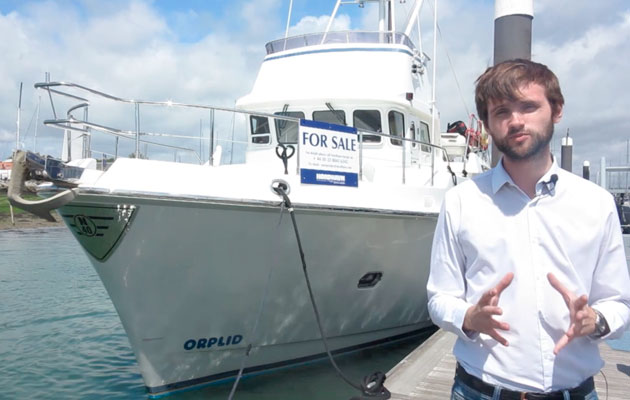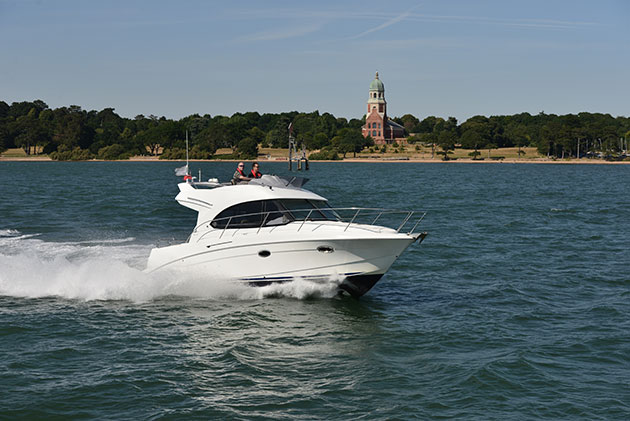The Haines 350 is an exceptionally spacious 35-footer makes the ideal floating home from home
“It’s like having the interior of a 42ft boat inside the exterior of a 35-footer.” Haines 350 owner John Branson is explaining the appeal of the boat he’s owned since 2013 and keeps at Harleyford Marina.
Aft-cabin boats are nothing new of course. Companies like Broom have been building them for years. Indeed, John fell in love with the aft- cabin concept many years ago when he saw a Broom 37 Continental.
It was well out of his financial reach at the time, but the advantages of the aft- cabin layout stayed with him when the time did come to buy a boat.
Head for the aft cabin of the Haines 350 and you can immediately see why. ‘Cabin’ sells it short – it’s a small bedroom that takes full advantage of the boat’s beamy aft end.
A central double bed leaves ample space for a large storage area to port and a generous ensuite to starboard. Not only does the owner gain a master cabin that compares favourably with ones more normally associated with boats 10ft longer, he or she also benefits from the privacy this layout offers, as guests are accommodated at the opposite end of the boat, quite literally as far away as possible.

VIDEO: Used Boat takes a look at the Broom 50
When it was launched in 1998, the Broom 50 was the Brundall yard’s flagship, but how has it stood up

VIDEO: Haines 32 Offshore proves its seaworthiness
The offshore version of the Haines 32 more than lives up to its name, as Jack Haines found out on
Up in the bow, the guest cabin is fitted with a vee-berth setup, plus another heads. The galley is on this level too, just aft of the guest cabin. Again, the space and facilities belie the boat’s size.
It feels more like the kitchen of a small flat with its gas oven and grill, three-burner hob and microwave.
Splitting the two areas is a comfortable saloon with masses of seating but no lower helm. Head up the steps to the aft deck and you’ll see why. Rather than putting a flybridge on the cabin roof, the helm is on the aft deck.
You lose the space gained by separating the flybridge and the aft deck, but you gain the ability to put a high windscreen around the front of what becomes a small cockpit area and enclose it with canopies – which is why there’s no need for that lower helm position. You also lower the air draft in the process, making the boat ideal for inland waterways.























